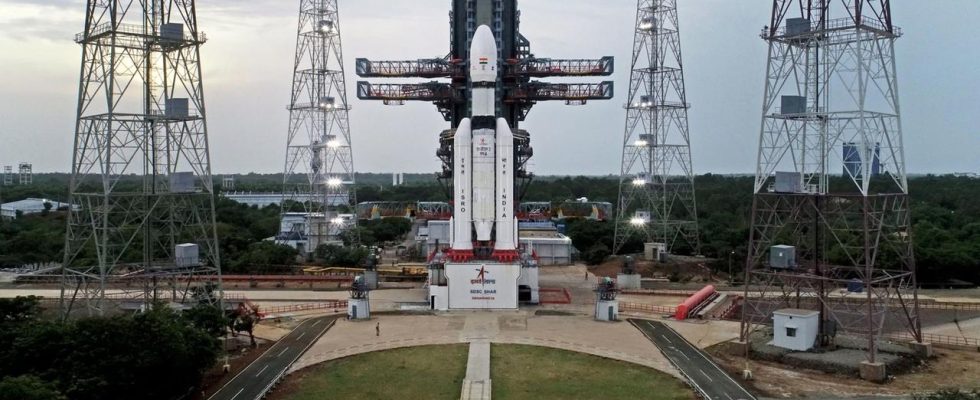Four years ago, India had already tried it once unsuccessfully, but it should work on the second attempt – an unmanned landing on the moon. Prestige is also at stake for the country.
The pride of Indian space travel is more than 40 meters high – the LVM3 launch vehicle. At the end of March, it successfully carried a total of 36 satellites into space. At the next launch, which is scheduled for the morning German time, the rocket will carry a moon landing module into space. That should then touch down on the lunar surface at the end of August and release a small robot.
The rover, named “Pragyan”, which means something like “wisdom”, will then carry out various measurements, explains Sreedhara Somanath, head of the Indian space agency ISRO: “We look at the elementary composition, both that of the moon’s surface and also the extremely thin atmosphere near the ground.” In addition, one wants to measure the seismic activities of the moon, if there are any at all, by exposing a highly sensitive measuring device there. “These will be the most important measurements of this mission.”
satellite solution planned for neighboring countries
If all goes according to plan, India would become the fourth country to successfully land on the moon, after the former Soviet Union, the United States and China. The last attempt failed in 2019, now nothing should go wrong. Because for India, the moon mission is also a sales presentation. In the future, the country would like to act as a space service provider in South Asia and enable its neighbors to have their own satellite communications.
Rajkumar Ranjan Singh is Minister of State in the Indian Ministry of Foreign Affairs and promotes the wide range of possible applications for emerging and developing countries: “Space technology increases predictability – for example of the effects of climate change on crops, it’s about food security.” But a look at possible natural disasters or the distribution of economic growth is also conceivable. “These are all uncertainties that particularly affect the developing countries in the Global South. Space technology and space economy can help us to achieve sustainable development goals,” said the Minister of State.
Next project already planned
However, space travel is not only interesting for India as a business model, but also for security policy. For example, when it comes to getting your own regional navigation system off the ground. That could work independently of the US GPS, explains India’s top space engineer Somanath.
“We need our own systems in case we need to protect ourselves.” That’s why they designed a concept called NavIC. “It’s not a global system, like the GPS of the US, which is a global military power. We’re not,” Somanth admits. “Rather, we considered how a regional navigation system could look like just for India and its neighboring countries and how it could serve our strategic purposes.”
And if the moon landing project is successful, the space agency is already planning its next project – India’s first manned mission into space.

